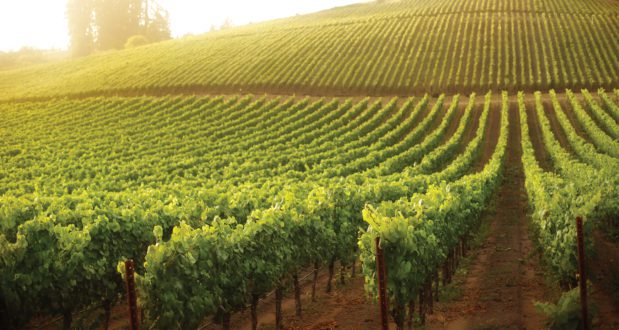Nov 19, 2019Planning for the 2020 grape growing season with weather and region in mind
{Sponsored} Last grape season started cold and wet in California. Many growers were rightfully concerned about how the early season weather would impact the 2019 growing season.
Kate Walker, BASF Technical Service Representative for coastal California grapes, saw many growers change their normal herbicide application patterns. “In an effort to save money, some growers cut back on residual herbicide applications. This resulted in weed issues, and some growers had to make late season burndown applications and, in some cases, send hand crews through as well,” Walker said. To learn from this, Walker recommends growers approach weed management in 2020 by planning a weed management program to stick to throughout the season.
Additionally, growers saw mite outbreaks that normally would have arrived later. A pest that coastal California growers had to contend with this past year was the mealybug. Because of the late rains and cooler spring temperatures, both bloom and harvest were delayed in Walker’s region. As a result of what Mother Nature threw at grape growers and the unexpected weather, Walker suggests California growers be prepared for all possible weather patterns in 2020.
Grapes management in the Midwest
In Michigan, some growers experienced the 2019 polar vortex, which damaged vines. Some grape vines were damaged all the way to the ground. Tim Miles, Assistant Professor and Extension Specialist at Michigan State University, noted that growers will finally begin to get back to normal production in 2020 after spending much of the season retraining grape vines and preserving all growth.
“This next season will hopefully be a normal fruit production year, leading to standard management practices. Disease pressure was moderate to high this growing season, mainly because downy mildew and botrytis bunch rot thrive in wet and cool conditions,” Miles said.
While planning for 2020, the major threats to consider for Michigan grapes will be downy mildew, powdery mildew, black rot, Phomopsis, sour rot and botrytis bunch rot. Trevor Kraus, a BASF Technical Service Representative based in Michigan, suggests growers look to Pristine® fungicide for broad-spectrum control and to consider adding Vivando® fungicide to their programs as needed.
“Pristine fungicide is a standard in the industry, while Vivando fungicide is newer and more of a specialist on powdery mildew. Pristine has consistently shown excellent broad-spectrum efficacy against fungal diseases of wine grapes,” Miles said.
Pristine fungicide works via two active ingredients with separate modes of action, and the premix is a great option for resistance management, according to Walker. Vivando fungicide is a great addition when a more targeted approach is needed to fight powdery mildew. Cevya® fungicide is a brand-new active ingredient that received federal registration in June 2019 and is awaiting DPR registration in California. Cevya fungicide belongs to FRAC group 3 and controls powdery mildew, as well as Phomopsis and black rot.
Adding insecticides to round out the portfolio
In addition to the chemistries Kraus recommends to grape growers in Michigan, Walker suggests that California grape growers also look at adding a miticide to their rotations. Walker recommends Nealta® miticide as an option to control mite outbreaks. In 2019, growers also experienced problems with the mealybug, which can vector many viruses. Walker recommends growers control sugar feeding ants, as they will tend to mealybugs in return for honeydew excretion that the ants then harvest and feed on. Altrevin® fire ant bait insecticide is Walker’s go-to for controlling the ants that tend to the mealybug.
Keeping resistance management in mind
To optimize the standard chemistries and reduce resistance issues, Walker’s key recommendation is to make thorough applications and rotate different chemistries. “If you do have a hot spot or area where you don’t see sufficient control, then reach out to your representative or extension advisor to see how to manage in that block,” Walker said.
“Fungicide-resistant pathogens that cause powdery mildew and botrytis bunch rot have been identified in many grape-growing regions across the country,” Miles said. To prevent this happening in a specific vineyard, growers should apply proactively to prevent some of the problems seen in California and Michigan in 2019, and always be sure to rotate FRAC groups to manage resistance.
To learn more about the full list of offerings for grape growers from BASF, visit GrowSmartGrapes.com.
Always read and follow label directions.
Pristine, Vivando, Cevya, Nealta and Altrevin are registered trademarks of BASF.
© 2019 BASF Corporation















